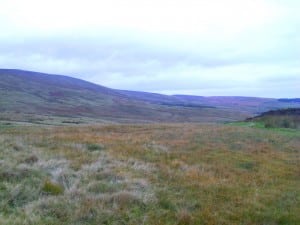Support us from £3/month
We deal with almost 1000 cases a year assisting communities, groups and individuals in protecting their local spaces and paths in all parts of England and Wales. Can you help us by joining as a member?
The Open Spaces Society and the British Horse Society have launched a joint project to rescue thousands of acres of lost common land and record them for public use. We are funding Steve Byrne to research land in the Lancashire area that was omitted from the commons registers in the late 1960s and early 1970s and to apply to have it reinstated.
Schedule 2(4) of the Commons Act 2006 enables anyone to apply to ‘re-register’ land that was provisionally but not finally registered under the Commons Registration Act 1965. At present this is only possible in the pioneer areas but the societies hope that it will be extended to the whole of England before long.
Many areas of common land were missed from the registers when they were first opened, for a three-year period, in 1967. However, where an application was made under the 1965 Act and was cancelled or part-cancelled, the case may now be reconsidered under schedule 2(4). In effect, all that needs to be shown is that the land still qualifies as ‘waste land of a manor’, ie that it is of manorial origin and has not been developed or improved.
Says Steve Byrne: ‘There are at least 1,800 square kilometres of land in England and Wales that may be eligible for re-registration under schedule 2(4)—that is an area of about the size of the county of Worcestershire. This includes more than 250 square kilometres in the seven pioneer areas, with over a third of it in Lancashire and Blackburn with Darwen where the applications will be submitted.
‘The aim of the project is to demonstrate the significance of the schedule 2(4) provisions. It will focus on urban areas because land that is re-registered here will carry a right to walk and ride under section 193 of the Law of Property Act 1925.(6)
‘We hope that this project will encourage others to pursue similar applications elsewhere—that it will test the application process and help to suggest ways in which the costs at present faced by those pursuing applications in the public interest may be reduced.
‘So far, little attention has been paid to the schedule 2(4) provisions, although they have been live in the pioneer areas for almost three years. The accepted view is that extensive areas of land were mis-registered under the 1965 Act. This is not the case. In fact, very little land will be open to deregistration under the 2006 act. In contrast, the land eligible for re-registration under schedule 2(4) is equivalent to about a third of the area that is currently registered as common in England and Wales.’(7)
Says Mark Weston, the British Horse Society’s Director of Access, Safety and Welfare: ‘This project has the potential to provide access for horse riders on a large acreage of commons that were not registered under the original registration process’.
Adds Nicola Hodgson, case officer for the Open Spaces Society: ‘We are pleased to be supporting this pioneering project which will help to right the wrongs of the Commons Registration Act 1965 and lead to a significant increase in the amount of common land available for public enjoyment’.

